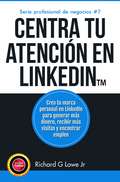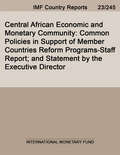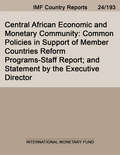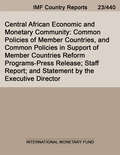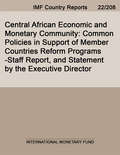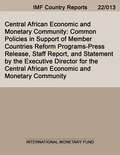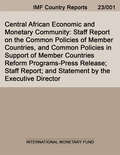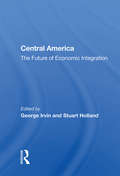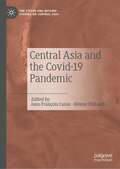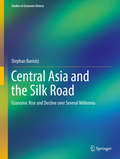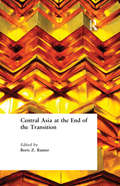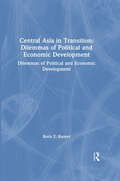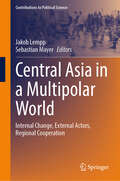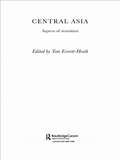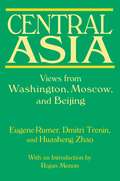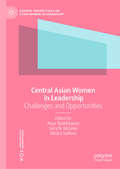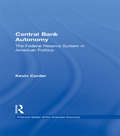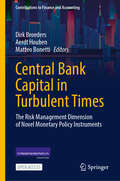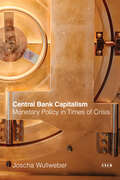- Table View
- List View
Centra tu atención en LinkedIn
by Lucía Domínguez García Richard G Lowe JrAumenta tus ingresos potenciando tu marca y promoviéndote de manera efectiva en Linkedin Aprende a escribir un perfil de LinkedIn que con casi toda seguridad te conducirá a más y mejores contactos, ofertas de empleo y visitas a tu negocio Si dejas tu perfil de LinkedIn tal y como lo tienes ahora, es bastante probable que, independientemente de los excepcional que seas, te quedes con el mismo trabajo poco satisfactorio y cansino o sigas buscando la manera de conseguir que tu negocio reciba más visitas. ¿Te sientes feliz en ese trabajo tan poco satisfactorio y mal pagado día tras día o buscas sin éxito que la gente se interese por tus productos y servicios? ¿O preferirías que las buenas oportunidades de trabajo y visitas a tu negocio lleguen a ti, ofreciéndote empleo o resultando en beneficios económicos? Para ello, aprende a escribir tu propio perfil de LinkedIn que atraiga a la gente adecuada para ti. Yo me he encontrado en la misma situación. He trabajado en empleos poco satisfactorios, con jefes que no se preocupaban y no premiaban el trabajo competente y de calidad. Me quedé en trabajos durante años mientras enviaba mi currículum a cientos de sitios, esperando que alguien reconociera mi valor. Para conseguir más dinero, creé mis propios servicios y productos y, por mi cuenta, la manera de llegar por mí mismo a mi mercado. He debido de intentar cientos de tipos diferentes de marketing y métodos de promoción, con éxito bastante limitado o nulo. Lo que me sacó adelante fueron las muchas horas de estudio, entrenamiento especialización y la práctica. Pero lo más importante, creí en mí mismo y en el valor que podía ofrecer a mis clientes con mis productos y mis servicios. Al principio, estaba contento de encontrar cada cliente nuevo y poder ganar algo de dinero extra. Pero luego comprendí cómo promocionarme de forma efectiva y los clientes e
Central African Economic and Monetary Community: Common Policies In Support Of Member Countries Reform Programs-staff Report; And Statement By The Executive Director (Imf Staff Country Reports)
by International Monetary Fund. African Dept.A report from the International Monetary Fund.
Central African Economic and Monetary Community: Common Policies In Support Of Member Countries Reform Programs-staff Report; And Statement By The Executive Director (Imf Staff Country Reports)
by International Monetary Fund. African Dept.A report from the International Monetary Fund.
Central African Economic and Monetary Community: Common Policies Of Member Countries, And Common Policies In Support Of Member Countries Reform Programs-press Release; Staff Report; And Statement By The Executive Director (Imf Staff Country Reports)
by International Monetary Fund. African Dept.A report from the International Monetary Fund.
Central African Economic and Monetary Community: Staff Report On The Common Policies Of Member Countries, And Common Policies In Support Of Member Countries Reform Programs-press Release; Staff Report; And Statement By The Executive Director For The Central African Economic And Monetary Community (Imf Staff Country Reports)
by International Monetary Fund. African Dept.A report from the International Monetary Fund.
Central African Economic and Monetary Community: Staff Report On The Common Policies Of Member Countries, And Common Policies In Support Of Member Countries Reform Programs-press Release; Staff Report; And Statement By The Executive Director For The Central African Economic And Monetary Community (Imf Staff Country Reports)
by International Monetary Fund. African Dept.A report from the International Monetary Fund.
Central African Economic and Monetary Community: Staff Report On The Common Policies Of Member Countries, And Common Policies In Support Of Member Countries Reform Programs-press Release; Staff Report; And Statement By The Executive Director For The Central African Economic And Monetary Community (Imf Staff Country Reports)
by International Monetary Fund. African Dept.A report from the International Monetary Fund.
Central African Republic: Enhanced Initiative for Heavily Indebted Poor Countries--Decision Point Document
by International Monetary FundA report from the International Monetary Fund.
Central African Republic: Statistical Annex
by International Monetary FundA report from the International Monetary Fund.
Central America
by International Monetary FundOpportunities for growth and investment in Central America could well improve in the coming years, as the region's ties with the world economy grow closer. This integration, however, also presents important challenges for economic policy to ensure that growth can be sustained and can benefit the poor. This book stresses the importance of keeping fiscal policy on a sustainable path, strengthening public investment in basic infrastructure and primary health care and primary and secondary education, and managing the risks associated with partial dollarization.
Central America: Global Integration and Regional Cooperation
by Markus Rodlauer Alfred SchipkeCentral America has received growing attention as a region that is integrating successfully into the global economy. Central America: Global Integration and Regional Cooperation examines-among others-the macroeconomic and fiscal implications of the Free Trade Agreement with the United States (CAFTA-DR), noting that the agreement will provide a boost to the integration process. To maximize the benefits in terms of faster sustainable growth, poverty reduction, and social progress, however, the region also needs to press ahead with ambitious structural reforms to entrench macroeconomic stability and ensure an attractive environment for investment, while stepping up regional cooperation in the areas of taxes and tax administration, financial systems, and statistics.
Central America: Strategy for Economic Integration
by Michael E. Porter Niels W. KetelhohnDescribes the economic integration efforts of the Central American countries in the late 1990s.
Central America: The Future Of Economic Integration
by George Irvin Stuart HollandThis book addresses selected aspects of reconstructing Central American's industrial and trading system. Special attention is given to the role of the European Community in regional reconstruction and integration and analyzes the economic legacy of the 1980s and the impact of adjustment policy. .
Central American Recovery and Development
by Ann Hubbard William L. AscherThe International Commission for Central American Recovery and Development was created in 1987 to analyze development in the region and to make recommendations to the region's governments and to the international community. The essays in this volume were written by experts in Central American development, economics, politics, and administration who were asked by the commission to synthesize existing knowledge on Central America's prospects for aid, trade, and institutional reform, and to propose creative approaches to the problems facing the region. The Center for International Development Research at Duke University was chosen to perform the editorial and support tasks for the commission.
Central Asia and the Covid-19 Pandemic (The Steppe and Beyond: Studies on Central Asia)
by Jean-François Caron Hélène ThibaultThis book aims at shedding light on the reasons why the death rates during the pandemic were so high in Central Asia. More specifically, this book proposes analysis on why individuals did not follow the sanitary rules imposed by their respective government and on the role played by misinformation. Secondly, it also examines the impact of Sinophobia in Central Asia and the future challenges this feeling may pose on the authorities in the near future. Lastly, this book also proposes analysis of how the pandemic has contributed to show the inherent vulnerabilities of Kazakhstan and Kyrgyzstan by focusing on their immediate and future political consequences.
Central Asia and the Silk Road: Economic Rise and Decline over Several Millennia (Studies in Economic History)
by Stephan BarisitzThis book offers a comprehensive overview of the pre-modern economic history of Central Asia and the Silk Road, covering several millennia. By analyzing an abundance of sources and materials, it illustrates the repeated economic heydays of the Silk Road, during which it linked the Orient and Occident for many centuries. Nomadic steppe empires frequently dominated Central Asia, molded its economy and influenced trade along the Silk Road. The book assesses the causes and effects of the wide-ranging overland trade booms, while also discussing various internal and external factors that led to the gradual economic decline of Central Asia and eventual demise of the Silk Road. Lastly, it explains how the economic decline gave rise to Chinese and Russian colonialism in the 18th and 19th centuries. Detailed information, e. g. on the Silk Road's trajectories in various epochs, is offered in the form of numerous newly drafted maps.
Central Asia at the End of the Transition
by Boris Z. RumerFor better or worse, the former Soviet republics of Central Asia have largely completed their post-independence transitions. Over more than a decade, they have established themselves as independent states whose internal regimes and external relations have characteristic patterns and vulnerabilities both individually and as a group. The purpose of this volume is to assess both what has been accomplished and the trends of development in the region, especially its leading states. How sound are the foundations of this "bulwark against the spread of terrorism" in Eurasia?
Central Asia in Transition: Dilemmas of Political and Economic Development
by Boris Z. RumerThe economic, political and geopolitical future of Central Asia has been subject to speculation since the region emerged from under the Soviet banner. With contributions from Central Asian, Russian, US and Japanese experts, this book gives an analysis of the issues and choices facing the region.
Central Asia in a Multipolar World: Internal Change, External Actors, Regional Cooperation (Contributions to Political Science)
by Jakob Lempp Sebastian MayerThis handbook-style edited volume discusses historical, but predominantly current political, economic, and societal trends in Central Asia comprising Kazakhstan, Uzbekistan, Kyrgyzstan, Tajikistan, and Turkmenistan. The five countries exhibit many cultural and historical commonalities and face similar internal and external challenges. Despite different transformation paths and frequent intra-regional tensions, a common regional identity has emerged in the countries since gaining their independence in 1991. Besides covering their political systems, a variety of topics such as human rights, media, terrorism, and civil society are addressed. As well, bilateral relations with seven external actors are examined. Lastly, the authors explore the opportunities and limitations of institutionalized regional cooperation in various fields of action.
Central Asia: Aspects of Transition (Central Asia Research Forum)
by Tom Everett-HeathThe five central Asian States of Kyrgyzstan, Tajikistan, Turkmenistan and Uzbekistan stand at the crossroads of world civilization. Influenced by South Asia, Iran, China and Russia, this region which has recently burst onto the world stage once again, guards a distinct identity. This collection by established experts on the area covers the dramatic Soviet interventions of the early twentieth century, and details the role of ethnicity and the contribution made by Islamic impulses in the process of building the modern nation states.
Central Asia: Views from Washington, Moscow, and Beijing (Eurasia In The 21st Century Ser. #Vol. 2)
by Dmitri Trenin Eugene B. Rumer Huasheng ZhaoThe disintegration of the Soviet Union in 1991 rapidly and irrevocably transformed Central Asia's political landscape. This region of five sovereign states with a population of some fifty million people quickly became a major focus of interest and influence for competing poles of power. The eminent contributors to this volume offer a four-part analysis of the region's new importance in world affairs. Rajan Menon examines the place of Central Asia in a global perspective. Eugene Rumer considers the perspective of the post-9/11 United States. Dimitri Trenin looks at the region from the standpoint of traditional hegemon Russia. Huasheng Zhao provides the view from economic superpower-in-the-making China.
Central Asian Women in Leadership: Challenges and Opportunities (Current Perspectives on Asian Women in Leadership)
by Gary N. McLean Aliya Tankibayeva Dinara SeitovaThis volume examines the unique cultural and socioeconomic aspects of Central Asia and the effects of these elements on women leaders in the region, focusing on five countries. Unfortunately, gender inequality and underutilization of women’s talents are deeply embedded in historical, socio-economic, and cultural developments of this region. Nevertheless, despite the difficulties Central Asian women leaders face, there are emerging patterns of changes and improvement in the current state of women. This book discusses the impact of these changes. The book opens with an overview chapter that covers the historical and socio-cultural background for the region, followed by five chapters devoted to each Central Asian country. Next, there are chapters discussing leadership opportunities for women, in business as well as education and government. The closing chapter identifies commonalities and differences among countries in the region and offers a future avenues of research. This edited book has critical implications for the development of women leaders in Central Asia, providing insights that explain the background, current tendencies, and future opportunities for developing the potential of highly qualified women leaders in the Central Asian countries.
Central Bank Autonomy: The Federal Reserve System in American Politics (Financial Sector of the American Economy)
by Kevin CorderFirst Published in 1998. Routledge is an imprint of Taylor & Francis, an informa company.
Central Bank Capital in Turbulent Times: The Risk Management Dimension of Novel Monetary Policy Instruments (Contributions to Finance and Accounting)
by Aerdt Houben Dirk Broeders Matteo BonettiThis open access book provides a comprehensive overview of the vulnerabilities of central banks’ financial accounts and the implications for central bank capital and risk management in turbulent times. By combining the perspectives of academics, risk managers and policy makers, it sheds light on the complex challenges facing central banks and offers key insights into safeguarding the stability of financial systems in an uncertain future. In an era of heightened uncertainty, central banks face unprecedented risks. Following consecutive crises, they have expanded their monetary policy toolkit through quantitative easing and credit extension, which has bloated their balance sheets and exposed them to substantial risks. Moreover, central banks are confronting novel challenges like climate change and nature loss, which threaten their objectives of price stability and financial stability. At the same time, central banks find themselves in a precarious position, as they raise interest rates to combat inflation, generating financial losses on their asset portfolios. These losses threaten to erode their capitalization, a cornerstone of central bank independence and credibility.
Central Bank Capitalism: Monetary Policy in Times of Crisis (Currencies: New Thinking for Financial Times)
by Joscha WullweberToday's global financial system bears little resemblance to what it was at the end of the twentieth century. Shadow banking—financial activity taking place outside existing regulatory frameworks—has grown so important that it now serves as the backbone of the entire system. The shadow banking system, however, is highly unstable and the main reason why the financial system has remained in crisis mode since the 2008 financial crisis. To maintain stability, central banks like the Fed and the European Central Bank have come to use radical new monetary policy instruments which were inconceivable until very recently. Without intervention on the part of central banks, existing financial systems would completely collapse. As Joscha Wullweber shows, there has been a radical change in the state-market nexus. With governments refraining from strong and comprehensive fiscal and financial regulatory policies, central banks have become the main stabilizing force and the nodal point of financial circulation. These overburdened institutions are called on to make near-daily interventions to avert crisis. Wullweber calls this historic phase central bank capitalism. His book offers a lucid account of our current state of permanent crisis with its new dilemmas and paradoxes that pose enormous challenges to financial and economic stability.
